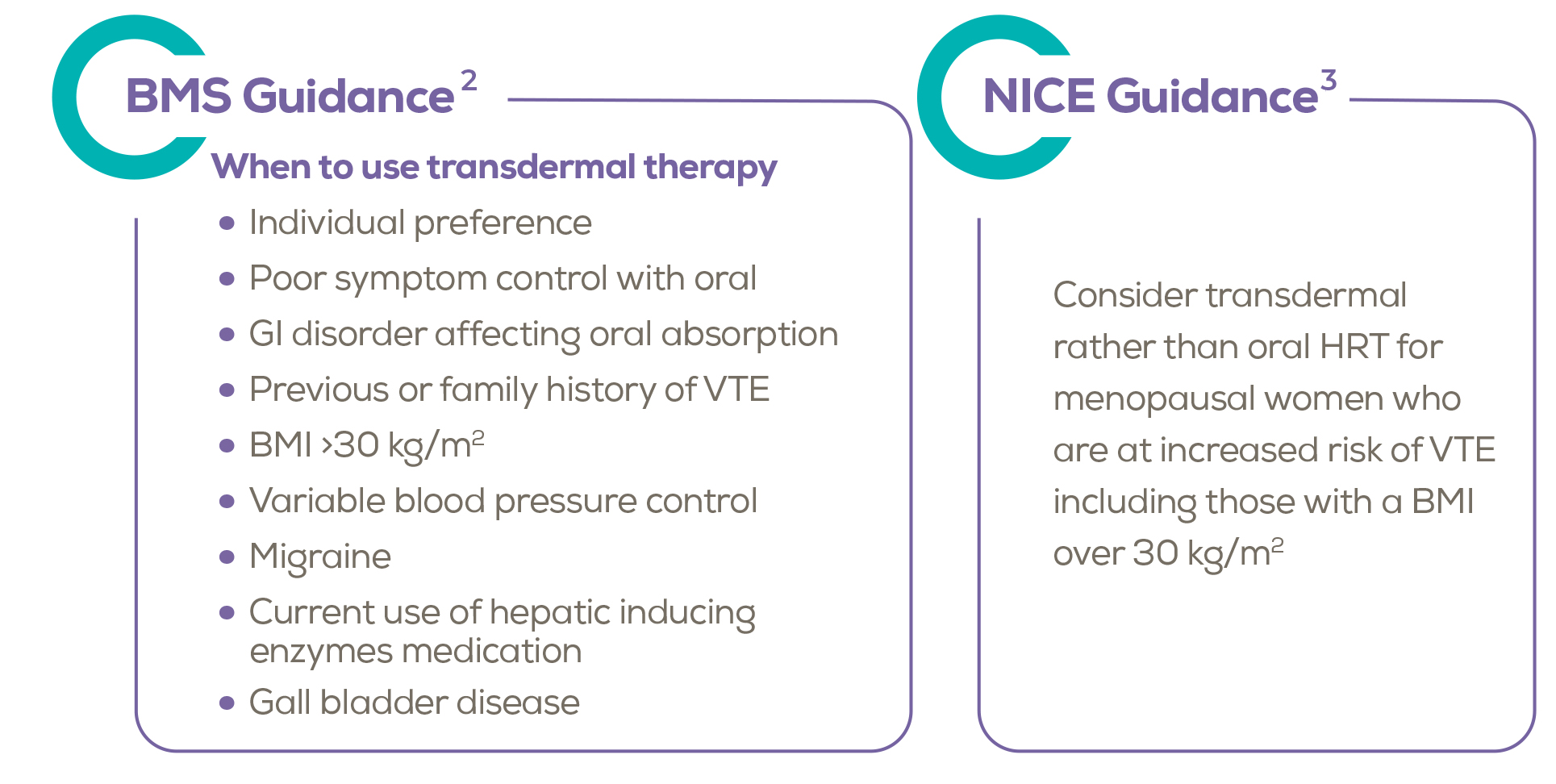The Benefits of Transdermal Patches vs Gels
When to use Transdermals
The risk of venous thromboembolism (VTE) is increased by oral HRT compared with baseline population risk and is greater for oral than transdermal preparations2
Reference
- Adapted from the Management of the Menopause, Sixth edition, published by the British Menopause Society (BMS)
- https://thebms.org.uk/wp-content/uploads/2022/12/04-BMS-TfC-HRT-Guide-NOV2022-A.pdf
- NICE Guidelines. Menopause: diagnosis and management. https://www.nice.org.uk/guidance/ng23/resources/menopause-diagnosis-and-management-pdf-1837330217413

